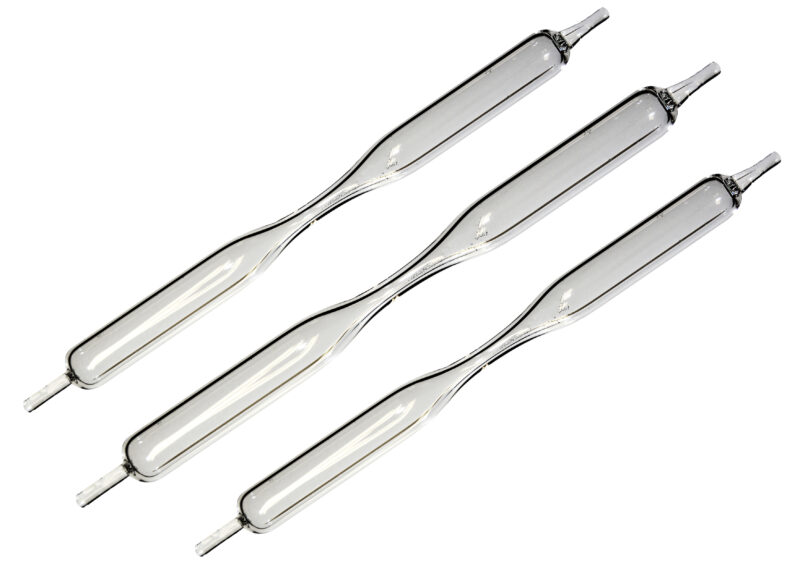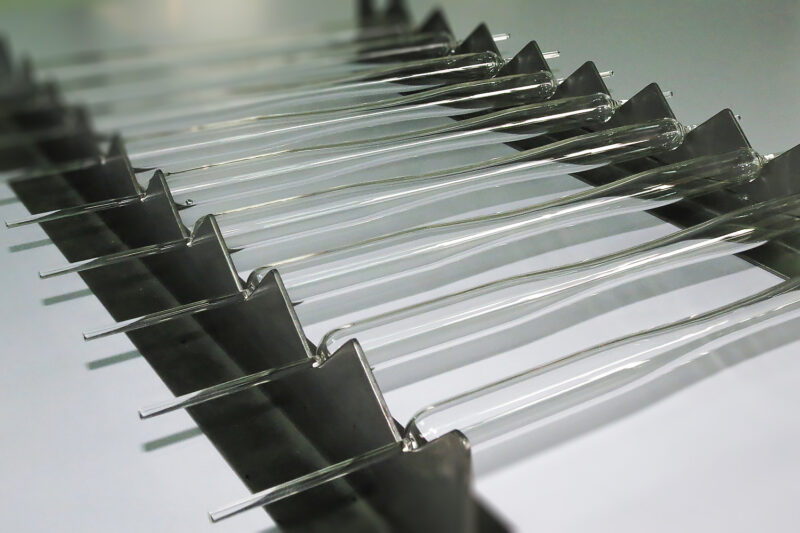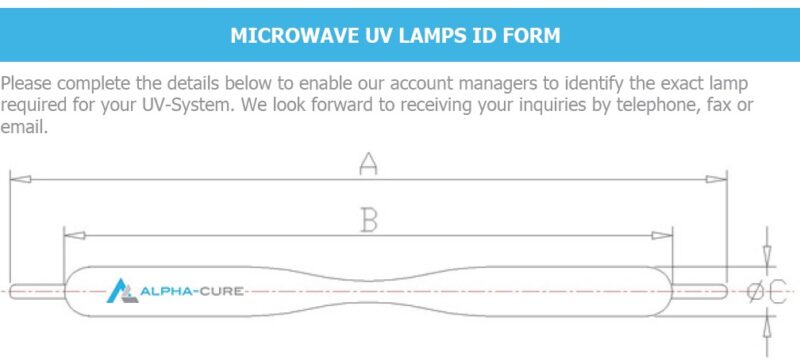When it comes to UV curing, both microwave UV lamps and traditional UV lamps have valuable roles to play. Each technology offers unique features and advantages that make them suitable for different industrial applications. In this blog, we’ll explore the key features of microwave UV lamps, the benefits they provide, and how they’re being used across different industries.
Microwave UV Lamps: How They Work
Microwave UV lamps differ from traditional UV lamps in how they generate UV light. While traditional lamps, such as medium-pressure UV lamps, use electrodes to create an electric arc that excites mercury vapour, microwave UV lamps rely on microwave energy to generate UV light. This electrode-free system offers distinct advantages in certain settings but doesn’t necessarily outperform traditional UV lamps in every scenario.

Features of Microwave UV Lamps
 Electrode-Free Technology
Electrode-Free Technology
The absence of electrodes allows for a longer lamp lifespan and removes any issues that can arise from electrode degradation. As a result, microwave UV lamps maintain a steady UV output throughout their operational life, ensuring consistent performance.- Instant Ignition and Re-Ignition
One of the key benefits of microwave UV lamps is their ability to start up instantly. This rapid ignition eliminates downtime associated with warming up traditional UV lamps. Moreover, their quick re-ignition capabilities are beneficial in processes where interruptions are minimal, maximising efficiency. - High-Intensity UV Output
Microwave UV lamps produce a highly concentrated form of UV light, allowing them to quickly cure materials like inks, adhesives, and coatings. This makes them especially useful in high-speed production environments. - Long Lifespan
With no electrodes to burn out, microwave UV lamps can last longer than medium-pressure UV lamps (dependant on specific use). The extended lifespan of these lamps means fewer replacements are required, reducing downtime and maintenance costs.
 Advantages of Microwave UV Lamps
Advantages of Microwave UV Lamps
- Low Maintenance
Because they have fewer parts prone to wear, microwave UV lamps require less maintenance than traditional UV lamps. The lack of electrodes reduces the chances of failure, leading to fewer breakdowns and disruptions in production. - Stable UV Output
One of the biggest advantages of microwave UV lamps is their stable output over time. Without electrodes to degrade, the UV radiation they emit remains constant throughout the life of the lamp. This is critical for industries that require consistent curing quality, such as printing or coatings. - Energy Efficiency
Microwave UV lamps can also be more energy-efficient than some traditional UV lamp technologies, helping companies reduce their energy consumption and lower operational costs. Their ability to cure specific materials faster means production cycles may be shortened, contributing to overall process efficiency. - Environmentally Friendly
Due to their energy efficiency and longer lifespan, microwave UV lamps can contribute to a lower carbon footprint for companies. This is particularly important for businesses striving to meet sustainability goals.
Industrial Applications of Microwave UV Lamps
- Printing Industry
Microwave UV lamps are widely used in UV curing systems for printing applications. Their fast curing speeds and consistent output make them ideal for high-volume, continuous printing processes. This helps improve production times while ensuring high-quality print results, particularly for packaging and commercial printing sectors. - Surface Coating
Industries that apply surface coatings, such as wood, plastics, and metal, benefit greatly from the high-intensity UV output of microwave lamps. Their ability to cure thicker coatings rapidly improves throughput and ensures a durable finish, which is essential for industries like automotive manufacturing, furniture production, and architectural materials. - Adhesive Bonding
In sectors such as electronics, medical devices, and aerospace, microwave UV lamps are used for curing adhesives with high precision and reliability. These lamps ensure a quick and strong bond, which is vital for the structural integrity of the final product. - Electronics and Semiconductors
Microwave UV lamps are increasingly being adopted in the electronics and semiconductor industries for processes such as photolithography. The stable UV output ensures high-quality curing in fine, detailed applications, making them ideal for producing intricate electronic components. - 3D Printing
In the growing 3D printing market, microwave UV lamps are used to cure UV-sensitive resins. The faster curing times and high-intensity light improve the efficiency of the printing process, allowing manufacturers to produce high-quality, durable components in less time.
Choosing Microwave UV Lamps for Your Business

Microwave UV lamps offer unique advantages that can help optimise production processes in industries requiring fast, consistent UV curing. Their extended lifespan, stable output, and low maintenance requirements make them a practical and cost-effective choice for companies aiming to improve efficiency and reduce downtime.
If you are considering upgrading or expanding your UV curing systems, microwave UV lamps may provide the solution you need.
Alpha-Cure offers a range of high-quality microwave UV lamps designed for maximum performance and reliability. If you need a replacement microwave lamp then download and complete our specification form.
Contact Us to learn more about how our microwave UV lamps can help your business improve efficiency and product quality.
Latest Articles
UV Curing Lamp Maintenance: 5 Tips to Extend Lamp Life & Reduce Downtime
Proper maintenance of UV curing lamps is essential to keeping your operation running efficiently. In...
View ArticleIntroducing UV LED Test Dosimeters
A Simple Way to Verify Curing Performance Alpha-Cure has expanded its range of accessories with the ...
View ArticleMedium-Pressure UV Lamps – Standing the Test of Time
Medium-pressure UV lamps remain the enduring go-to solution for industrial curing due to their high ...
View ArticleIron-Doped UV Lamps: Why Discolouration Happens and Why It Matters
Understanding Iron-Doped Mercury UV Lamps: Why Discolouration Happens and Why It Matters This techni...
View Article